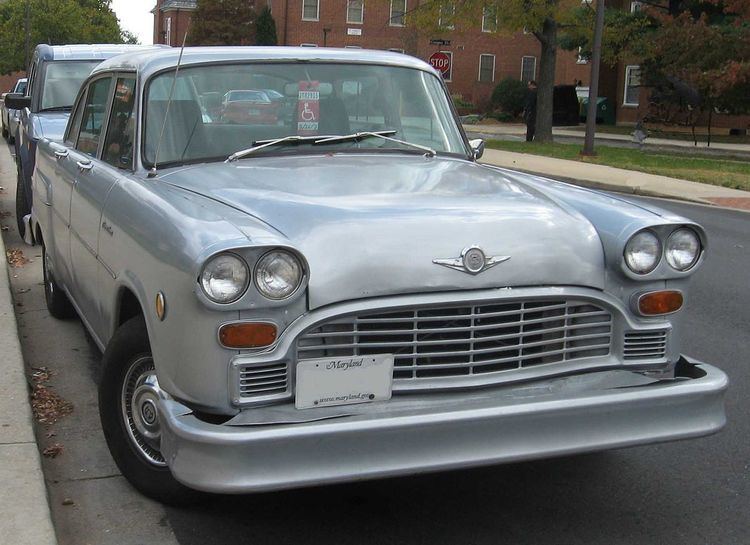Production 1960–1982 Layout FR layout | ||
 | ||
Related | ||
The Checker Marathon is an automobile produced by the Checker Motors Corporation of Kalamazoo, Michigan, between 1961 and 1982. It was marketed as a passenger car for consumers, as opposed to the similar Taxi, which was aimed at fleet buyers.
Contents
Marathons were produced in both four-door sedan and four-door station wagon forms, and the rare eight-door, 12-seater "Aerobus" wagon.
History
The Marathon was introduced in September 1960 for the 1961 model year, alongside, and later superseding, the Checker Superba Custom and differing from the Superba with its better interior appointments. Originally, it retained the Superba's A10 body code, whereas A9 was the code used for taxis. The exterior of the Marathon had a full-width egg-crate grille, differing from the Superba's narrower grille and inboard parking lights. After a minor facelift for 1963, chassis codes changed to A11 for taxis and A12 for passenger versions. Also in 1963, the Marathon Town Custom, a limousine version on a longer (129 versus 120 in) wheelbase appeared. This version, which seated eight, received the A19E chassis code. A few years later, this was changed to A12E.
With the exception of United States government-mandated 5 mph bumpers in 1974 and ongoing mechanical changes, the Marathon remained virtually unchanged during its 21-year production run. However, Checker did comply with all safety and emissions requirements while in production. Some of these changes help in identifying the year of a Checker, and included:
The final Marathon was manufactured in 1982, when Checker exited the automobile manufacturing business. The company continued operations for an additional 27 years producing body stampings for General Motors, Ford, and Chrysler, until January 2009, when it entered bankruptcy liquidation as a result of the downturn in the USA auto industry.
Notably, the Marathon's front suspension A-frames interchange with a 1956 Ford. The engines used were originally Continental-built L-head inline-sixes (OHV units for the wagons), but these were exchanged for Chevrolet sixes and small-block V8s for the 1965 model year. These continued to change as Chevrolet introduced modifications, peaking with the 1969 L-48 350 V8 which produced 300 hp (224 kW) (gross). In 1969, a Perkins 4.236 L diesel nonturbo engine was available as an option for all models, but for only one year. By 1973, power for the 350 had decreased to 145 hp (108 kW) and in 1975 catalytic converters were introduced. For 1980, the engine lineup was changed entirely, with a 3.8-litre V6 replacing the old inline unit, and a smaller 267 ci (4.4 L) standard V8. The big news was the Oldsmobile LF9 engine, a 348 cu in (5.7 L) diesel V8.
Checker did not have a nationwide dealer network and sold most of its production for fleet service. Apart from taxicab use, Marathons were also bought by police departments, most notably in Kalamazoo, where Checker had its factory.
Classic New York City taxicab
For decades, Checker was the taxicab of choice for New York City and many other American cities. The size of the car (seating many passengers), the robust construction, the lack of yearly changes to the styling (Especially the 1958 and later models, simplifying parts management), and the bolt-on rear quarter panels all contributed to the Marathon's ubiquity on the streets of Manhattan. For example, virtually any film set in New York City in the 1970s or 1980s will show a Checker Marathon. A knowledgeable Checker viewer, however, will note that many 1950s and 1960s movie scenes use Checker cabs built in the 1970s and early 1980s, since the bodies were virtually the same, and due to the lack of usable early specimens. Also, in works depicting the Soviet Union or East Bloc countries, such as the film Gorky Park and the original Mission: Impossible television series, Checker Marathons were used to depict Soviet-made Chaika 13 (GAZ 13) automobiles.
